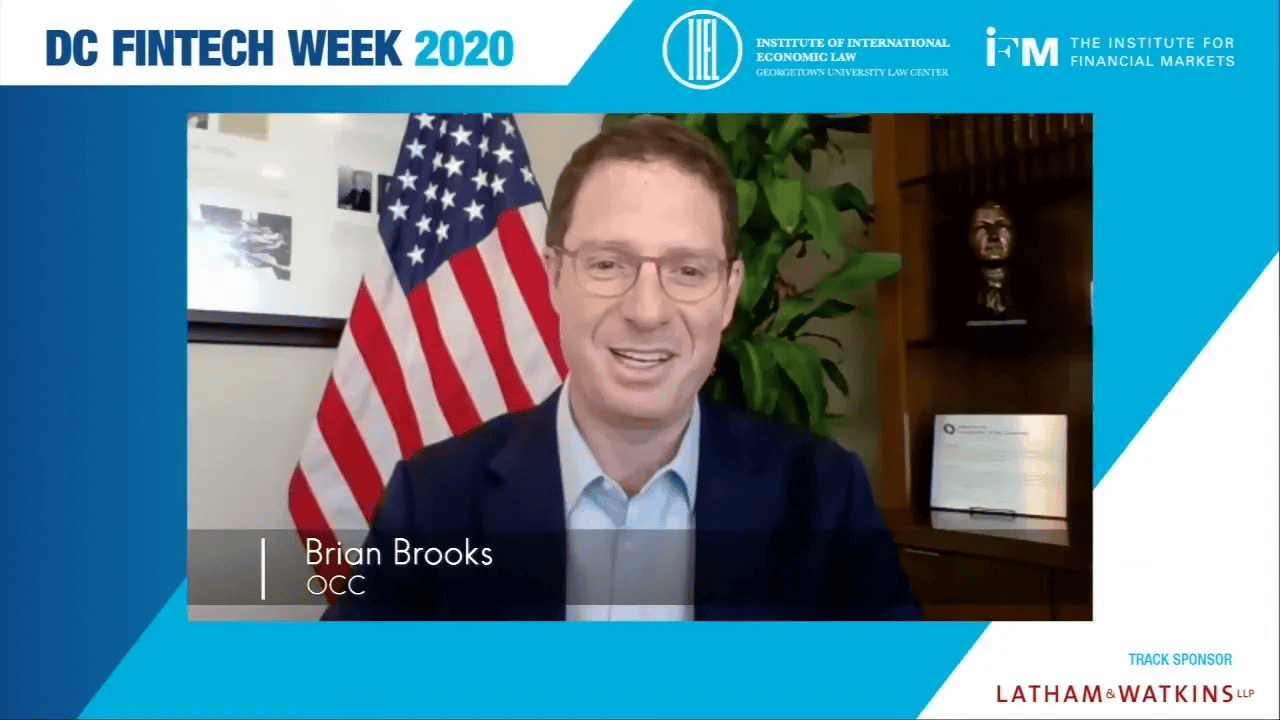In the rapidly evolving world of fintech, understanding the intersection of technology and banking is crucial. Acting Comptroller Brian Brooks shares his insights on how cryptocurrency is reshaping the banking landscape, the risks and opportunities it presents, and the future of financial services.
Table of Contents
- Introduction to Brian Brooks and His Role
- The Role of Stablecoins in Financial Services
- The Impact of Technology on Traditional Banking
- The Concept of Unbundling in Banking
- What It Means to Be a Bank in the Digital Age
- The Future of Banks and Value-Add Services
- Regulatory Challenges and Opportunities
- Financial Inclusion and the Community Reinvestment Act
- Balancing Risks and Benefits in the Current Economy
- Conclusion: The Path Forward for Fintech
- FAQ Section
Introduction to Brian Brooks and His Role
Brian Brooks, the Acting Comptroller of the Currency, has been a pivotal figure in the evolution of fintech, particularly in relation to cryptocurrency. With a background in both law and finance, he has positioned himself at the forefront of regulatory innovation, seeking to balance the burgeoning crypto landscape with traditional banking practices. His insights into the integration of cryptocurrency into banking highlight the potential for a more inclusive financial system.

The Importance of Cryptocurrency in Banking
Cryptocurrency represents a transformative shift in the financial ecosystem. It offers a decentralized alternative to traditional banking systems, allowing for peer-to-peer transactions without the need for intermediaries. This democratization of finance can lead to increased access to financial services for unbanked populations, opening doors that were previously closed.
Moreover, cryptocurrencies can enhance the efficiency of transactions, reducing costs associated with currency conversion and cross-border payments. As more banks begin to adopt these technologies, the integration of cryptocurrency into mainstream finance becomes increasingly plausible.
Clarifying Custody Services for Crypto Assets
One of the critical developments in the banking sector is the clarification of custody services for cryptocurrency assets. Financial institutions are now able to offer custody solutions that allow them to hold and manage digital assets securely. This is essential for building trust and legitimacy in the cryptocurrency space.
Custody services involve the safeguarding of private keys and ensuring compliance with regulatory standards. By enabling banks to offer these services, consumers can access the benefits of cryptocurrencies while enjoying the security and reliability associated with traditional banking.
Understanding the Risks and Positives of Crypto
While cryptocurrency offers numerous advantages, it is not without risks. The volatility of crypto assets can lead to significant financial losses for investors. Additionally, issues such as money laundering and fraud present ongoing challenges for regulators and financial institutions alike.
However, it is crucial to recognize the positives alongside the risks. The potential for financial inclusion, lower transaction costs, and increased efficiency are compelling reasons for banks to engage with cryptocurrency. By understanding and managing these risks, banks can leverage the opportunities presented by this digital asset class.
The Unstoppable Force of Decentralization
Decentralization is a defining characteristic of cryptocurrency that cannot be overlooked. It empowers users by removing the need for a central authority, thereby enhancing security and privacy. As decentralized finance (DeFi) continues to gain traction, traditional banks must adapt to this new paradigm or risk obsolescence.
Decentralized networks are inherently more resilient and cost-effective than centralized systems. This shift towards decentralization represents a significant departure from traditional banking models, prompting a reevaluation of how financial services are delivered.
Identifying Key Use Cases for Crypto
Identifying practical use cases for cryptocurrency is essential for its acceptance and integration into the financial system. One of the most promising applications is in remittances, where cryptocurrencies can facilitate faster and cheaper cross-border transactions.
Another key use case is programmable money through stablecoins, which combine the benefits of cryptocurrency with the stability of traditional currencies. These assets can be used for everyday transactions, bridging the gap between fiat and digital currencies.
Additionally, cryptocurrencies can enhance supply chain transparency, allowing for real-time tracking of goods and reducing fraud. As these use cases gain traction, they will further solidify the role of cryptocurrency in the future of finance.
The Role of Stablecoins in Financial Services
Stablecoins play a critical role in the fintech ecosystem, acting as a bridge between traditional finance and the digital currency world. By pegging their value to stable assets, such as fiat currencies, stablecoins mitigate the volatility often associated with cryptocurrencies. This stability makes them suitable for everyday transactions and as a medium of exchange in various financial applications.
Moreover, stablecoins enable seamless cross-border transactions, reducing the need for currency conversion and minimizing transaction costs. As financial institutions begin to integrate stablecoins into their services, the potential for increased efficiency and accessibility becomes apparent.
Benefits of Stablecoins
- Reduced Volatility: By maintaining a stable value, stablecoins provide users with a reliable medium of exchange.
- Increased Accessibility: Stablecoins can be accessed by anyone with an internet connection, promoting financial inclusion.
- Enhanced Efficiency: Stablecoins streamline transactions, reducing the time and cost associated with cross-border payments.
- Programmability: Smart contracts can be applied to stablecoins, allowing for automated and conditional transactions.
The Impact of Technology on Traditional Banking
Technology is fundamentally altering the landscape of traditional banking. With the rise of digital banking platforms, consumers are increasingly seeking more convenient and accessible financial services. This shift is forcing traditional banks to innovate and adapt to stay competitive.
Digital wallets, mobile banking apps, and online payment systems are just a few examples of how technology has transformed consumer banking behavior. Banks that fail to embrace these technologies risk losing market share to fintech companies that prioritize user experience and technological integration.

Key Technological Innovations in Banking
- Artificial Intelligence: AI enhances customer service through chatbots and personalized financial advice.
- Blockchain Technology: Blockchain provides secure and transparent transaction methods, increasing trust in the banking system.
- Mobile Payments: The rise of mobile payment solutions has changed how consumers transact, making payments quicker and easier.
- Data Analytics: Banks leverage big data to gain insights into customer behavior, enabling tailored products and services.
The Concept of Unbundling in Banking
Unbundling refers to the process whereby traditional banking services are broken down into specialized offerings. In the past, banks served as comprehensive providers of financial services, but the rise of fintech has led to the emergence of niche players focusing on specific aspects of banking.
This unbundling allows consumers to choose services that best meet their needs, leading to greater competition and innovation in the financial sector. For instance, while a traditional bank may offer loans, payments, and investments, a fintech startup might specialize solely in peer-to-peer lending or digital wallets.
Implications of Unbundling
- Increased Competition: Fintech companies challenge traditional banks, driving innovation and improving customer service.
- Consumer Choice: Customers can select services tailored to their specific needs, enhancing satisfaction.
- Focus on Core Competencies: Banks can concentrate on their strengths while outsourcing other services to specialized providers.
What It Means to Be a Bank in the Digital Age
In the digital age, the definition of a bank is evolving. No longer are banks simply custodians of deposits and providers of loans; they must now be technology-driven entities that prioritize customer experience and digital solutions. This shift requires banks to adopt agile methodologies and innovative technologies to remain relevant.
Furthermore, banks are expected to provide integrated financial services that encompass a range of offerings, from payments to investment products, all accessible via digital platforms. The challenge lies in balancing traditional banking principles with the demands of a tech-savvy consumer base.
Characteristics of Digital Age Banks
- Customer-Centric Approach: Emphasis on user experience and personalized services.
- Technological Integration: Seamless incorporation of technology into banking operations.
- Adaptability: Ability to quickly respond to market changes and consumer demands.
- Data-Driven Insights: Leveraging analytics to inform decision-making and improve services.
The Future of Banks and Value-Add Services
The future of banking lies in the ability to provide value-add services that go beyond traditional offerings. As consumers increasingly seek holistic financial solutions, banks must leverage technology to create personalized, integrated experiences. This means not only facilitating transactions but also providing financial education, investment advice, and wealth management services.
Additionally, banks will need to explore partnerships with fintech companies to enhance their service offerings. Collaborations can lead to innovative solutions that meet evolving consumer needs while allowing banks to focus on their core competencies.
Examples of Value-Add Services
- Financial Planning Tools: Banks can offer tools that help customers manage budgets and plan for future expenses.
- Investment Platforms: Providing access to investment opportunities tailored to individual risk profiles.
- Personalized Financial Advice: Utilizing AI to deliver customized insights based on customer behavior and preferences.
Regulatory Challenges and Opportunities
As the fintech landscape continues to evolve, regulatory frameworks must adapt to address new challenges and opportunities. Regulators face the daunting task of ensuring consumer protection while fostering innovation in the financial sector. Balancing these objectives is critical to maintaining trust and stability in the banking system.
Moreover, regulatory clarity can serve as a catalyst for growth, enabling fintech companies to explore new markets and expand their offerings. By creating an environment conducive to innovation, regulators can help drive the future of finance.
Key Regulatory Considerations
- Consumer Protection: Ensuring that consumers are safeguarded against fraud and exploitation.
- Compliance Standards: Establishing clear guidelines for fintech companies to follow.
- Encouraging Innovation: Creating a regulatory environment that supports technological advancements.
- Collaboration with Industry: Engaging with fintech firms to understand their needs and challenges.
Financial Inclusion and the Community Reinvestment Act
The Community Reinvestment Act (CRA) serves as a cornerstone in promoting financial inclusion. Its primary goal is to ensure that banks serve the needs of all communities, particularly those that have been historically underserved. The CRA encourages financial institutions to engage in lending and investment activities that benefit low- and moderate-income neighborhoods.
However, as fintech continues to evolve, the interpretation and implementation of the CRA require reevaluation. Traditional banking practices must adapt to the digital landscape, where online platforms can provide services to populations that are often overlooked. This is where fintech can play a pivotal role, bridging gaps in access and offering innovative solutions to meet the needs of diverse communities.
Enhancing the CRA Through Fintech
- Data-Driven Insights: Fintech companies can leverage data analytics to identify underserved areas and tailor products accordingly.
- Streamlined Processes: Digital platforms can simplify the application process for loans and other financial services, making them more accessible.
- Partnerships with Community Organizations: Collaboration with local organizations can enhance outreach and ensure that services meet community needs.
- Innovative Financial Products: Offering microloans, mobile banking, and alternative credit scoring can empower individuals who may lack traditional credit histories.
Balancing Risks and Benefits in the Current Economy
In today’s economic climate, the balance between risk and reward is more critical than ever. Financial institutions face the challenge of adapting to a rapidly changing environment while ensuring stability and compliance. This balance is particularly important as the rise of fintech introduces new players into the financial ecosystem.
Regulators must recognize that while fintech offers innovative solutions, it also brings inherent risks. Issues such as cybersecurity threats, data privacy concerns, and compliance with existing regulations must be addressed proactively. A collaborative approach between traditional banks and fintech companies can help mitigate these risks while maximizing the benefits of technological advancements.
Strategies for Risk Management
- Robust Compliance Frameworks: Establishing clear guidelines for fintech operations can help ensure adherence to regulatory standards.
- Investment in Cybersecurity: Prioritizing cybersecurity measures is essential to protect sensitive consumer information and maintain trust.
- Regular Risk Assessments: Conducting ongoing evaluations of potential risks can help financial institutions stay ahead of emerging threats.
- Consumer Education: Educating consumers about the risks and benefits of fintech products can empower them to make informed decisions.
Conclusion: The Path Forward for Fintech
The future of fintech is promising, driven by innovation and the potential for greater financial inclusion. As traditional banks and fintech companies continue to evolve, collaboration will be key to navigating the complexities of the modern financial landscape. By embracing technology while maintaining a commitment to consumer protection and regulatory compliance, the industry can foster a more inclusive and efficient financial system.
Ultimately, the path forward lies in creating an environment where both traditional financial institutions and fintech can thrive. This requires a willingness to adapt, a focus on consumer needs, and a proactive approach to managing risks. The integration of fintech into the broader financial ecosystem can lead to a more resilient and inclusive economy.
FAQ Section
What is fintech?
Fintech, short for financial technology, refers to the use of technology to deliver financial services, improve efficiency, and enhance customer experience. It encompasses a wide range of applications, from mobile banking to blockchain technology.
How does the Community Reinvestment Act (CRA) impact fintech?
The CRA encourages banks to meet the financial needs of all communities, particularly low- and moderate-income areas. Fintech companies can play a crucial role in enhancing CRA efforts by providing innovative solutions that improve access to financial services.
What are the main risks associated with fintech?
Key risks include cybersecurity threats, data privacy concerns, regulatory compliance issues, and the potential for market volatility. Financial institutions must implement robust risk management strategies to mitigate these challenges.
How can fintech contribute to financial inclusion?
Fintech can enhance financial inclusion by offering accessible financial products, streamlining application processes, and leveraging data to identify underserved communities. Collaborative efforts between fintech and traditional banks can further expand access to essential financial services.
This blog post is inspired by the video Acting Comptroller Brian Brooks Joins Chris Brummer for DC Fintech Week 2020. All credit for the video content goes to the original creator. Be sure to check out their channel for more amazing content!







